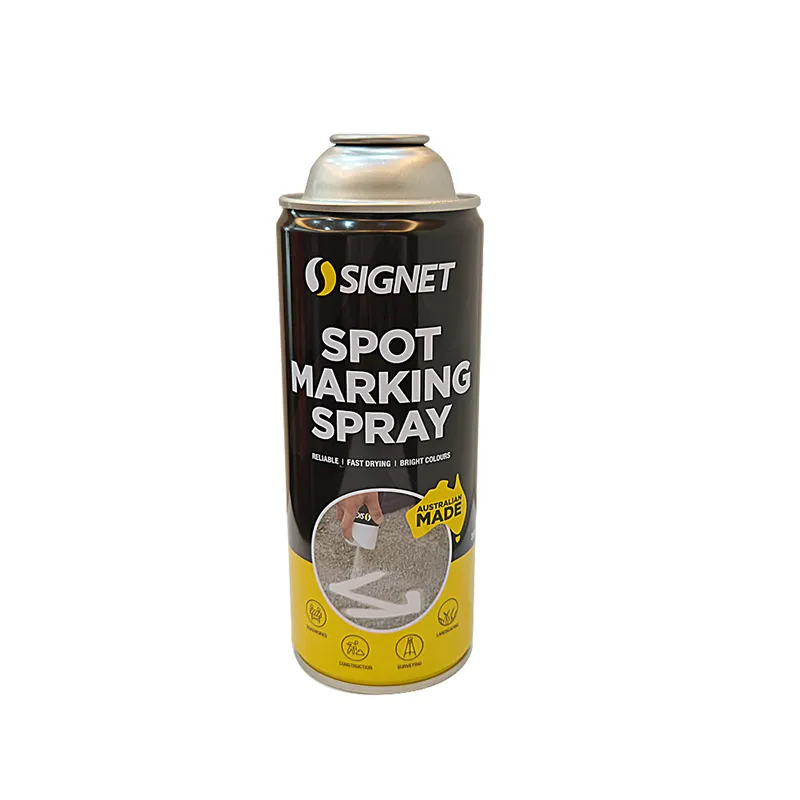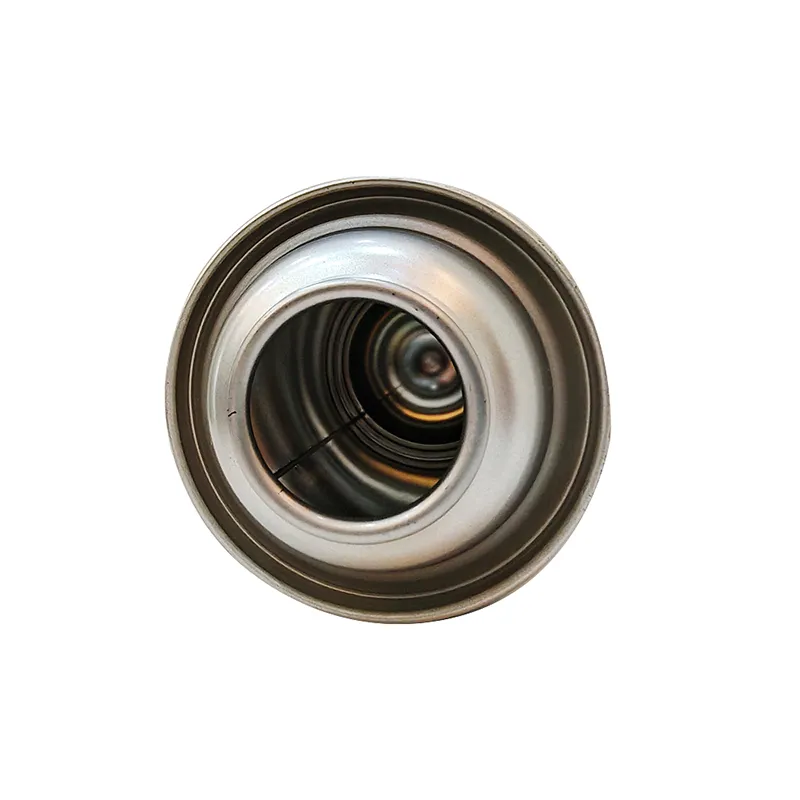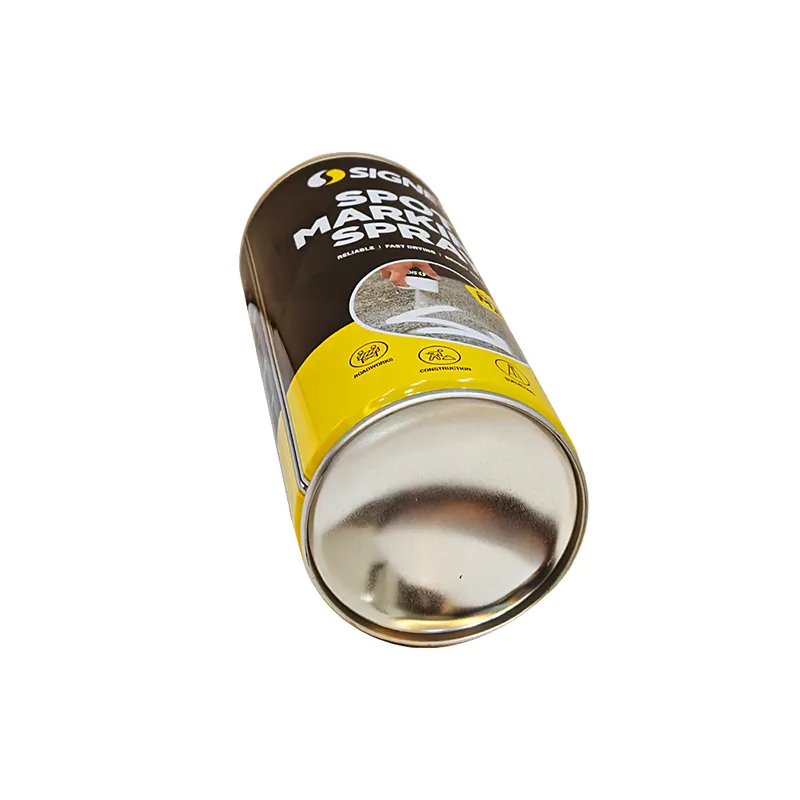Aerosol cans, as packaging containers widely used in daily life, are widely used in many fields such as cosmetics, detergents, medicines, food and industrial products. The reason why aerosol tin cans can be so widely used is inseparable from their convenient use experience and excellent sealing performance. However, the manufacturing process of aerosol cans is relatively complicated, involving the processing of multiple materials and highly precise process control.
This article will take the manufacturing of aerosol tin cans as the theme, and deeply analyze each link of its manufacturing process to help readers fully understand the production of this common but highly complex industrial product.

What is the basic structure of aerosol cans?
Before discussing the manufacturing process of aerosol tin cans, it is necessary to first understand its basic structure. Aerosol cans are composed of several main parts, namely:
1. Can body: The main part of the aerosol can, usually made of metal materials (such as aluminum or steel).
2. Valve system: The key component of the aerosol tin can, which controls the release speed and pressure of the contents.
3. Nozzle: The user releases the gas or liquid in the can through the nozzle, and the nozzle design directly affects the spraying effect.
4. Top cover: The upper structure of the aerosol can, usually made of plastic or metal materials, used to protect the valve system and nozzle.
5. Propellant: This is the core component of the aerosol tin can, usually compressed gas or liquefied gas, used to spray the contents of the can.
What are the basic materials for the manufacture of aerosol cans?
The manufacture of aerosol tin cans involves a variety of materials, mainly the following categories:
1. Metal materials: The metals used for the can body mainly include aluminum and tinplate (or steel). Aluminum cans are lighter and have good corrosion resistance, and are usually used for high-end aerosol cans; tinplate cans have better strength and are suitable for products with higher pressures.
2. Plastics: Plastics are mainly used for the manufacture of nozzles and top covers. Commonly used plastics include polyethylene (PE), polypropylene (PP), etc.
3. Propellant: The propellant of an aerosol tin can can be a liquefied gas (such as butane, propane) or a compressed gas (such as nitrogen, carbon dioxide). These propellants are the key driving force for the contents of the can to be sprayed out.

What is the manufacturing process of an aerosol can?
The process of manufacturing aerosol cans is mainly divided into the following key steps: can body forming, nozzle and valve manufacturing, assembly and filling. These steps involve the combination of multiple manufacturing technologies and processes, which will be described in detail one by one below.
Can body forming
The can body of an aerosol can is its most important structural part, and the production process is usually completed through metal stamping forming.
● Stamping process: The first step in manufacturing the can body is to process the metal sheet (aluminum or tinplate) into a cylindrical can body through a stamping process. First, the metal sheet is cut to obtain a metal sheet of appropriate size. Then, these metal sheets are pressed into a preliminary can body shape through a stamping machine. For aluminum can bodies, the "deep drawing" process is usually used to gradually stretch the aluminum sheet into a thin-walled can.
● Welding or seamless forming: For steel cans, the sides of the can body need to be sealed by a welding process to form a complete can barrel. In modern manufacturing technology, aluminum cans usually use seamless forming technology to ensure that the can body has better durability and sealing under high pressure.
● Spraying anti-corrosion layer: In order to prevent the contents from chemically reacting with the metal can body, an anti-corrosion coating is usually applied to the inner surface of the can body. This coating material is mostly epoxy resin, which has good acid and alkali resistance and chemical stability. The spraying of the coating requires precise control of thickness to ensure uniform distribution without affecting the sealing performance of the can body.
Manufacturing of valves and nozzles
Valves and nozzles are key components for releasing the contents of aerosol cans, and their manufacturing requires highly precise molds and assembly processes.
● Manufacturing of valve systems: The valve structure of aerosol tin cans is usually composed of a combination of metal and plastic, and common metals include stainless steel or brass. These valves must have good pressure resistance and reliable sealing capabilities. During the manufacturing process, the plastic parts are first injected through the mold, and then the metal parts are assembled into the plastic structure. When manufacturing the valve, special attention should be paid to the smoothness and sealing of the valve core to ensure that the aerosol can will not leak or clog when in use.
● Manufacturing of nozzles: The design of the nozzle directly affects the spraying form of the contents (such as fine mist, coarse flow, foam, etc.). When manufacturing nozzles, high-precision injection molding processes are usually used. In order to ensure the spraying effect, the size and shape of the nozzle aperture need to be strictly designed and tested. The nozzle not only needs to be durable enough, but also needs to ensure that it will not be blocked or deformed after long-term use.
Assembly of aerosol cans
After the production of the can, valve and nozzle is completed, the next step is the assembly process of the aerosol can. This stage is usually completed by automated equipment, and the steps are as follows:
● Assembly of valve and can: First, the valve needs to be installed on the top of the can. In modern manufacturing, automated machines are usually used to accurately install the valve to the can mouth and seal it with high pressure. In this process, ensuring a perfect seal between the valve and the can is key.
● Installation of nozzle: After the valve is installed, the nozzle will also be automatically assembled to the outlet of the valve system. This step requires ensuring that the nozzle can be firmly fixed on the valve and can be easily operated during use.
Filling of contents and filling of propellant
One of the most complex links in the production process of aerosol cans is the filling of contents and the filling of propellant. This process requires highly sophisticated equipment and strict safety control.
● Filling of contents: The contents inside the aerosol tin can can be liquid, paste or powder, depending on the purpose of the aerosol can. The filling process of the contents is usually carried out in a sterile or clean environment to ensure the quality and safety of the product. The filling equipment will accurately measure the volume or weight of the contents according to the capacity and formula in the can to ensure that the product meets the specifications.
● Filling of propellant: After the filling of the contents is completed, the filling of the propellant is the next key process. The propellant can be a liquefied gas (such as propane, butane) or a compressed gas (such as carbon dioxide, nitrogen). Liquefied gas is filled into the can in liquid form by pressurization, while compressed gas is directly injected into the can body through a high-pressure air pump. The filling amount and pressure of the propellant need to be strictly controlled to ensure that the aerosol tin can spray stably when in use.
Quality inspection and packaging
After the aerosol can is produced, it must undergo strict quality inspection and packaging to ensure that the product meets safety standards and meets the needs of consumers.
● Leak detection: The core of aerosol tin can manufacturing is sealing, so leak detection is an essential process. The testing equipment usually immerses the aerosol can in water and applies pressure to observe whether bubbles are generated. Only leak-free aerosol cans can pass the quality inspection.
● Pressure test: Aerosol cans need to maintain safety under high pressure, so during the manufacturing process, pressure testing is necessary. The equipment will apply additional internal pressure to the aerosol tin can to simulate the maximum pressure value that may occur during use. Only products that pass the test can enter the market.
● Packaging and delivery: Aerosol cans that pass the quality inspection will be transferred to the packaging line for packaging. There are many ways to pack, and the packaging form is usually determined by market demand, such as single packaging or batch packaging. After packaging, the product enters the warehouse and waits for shipment.

What are the key process control points in aerosol can manufacturing?
There are several key process control points in the entire manufacturing process of aerosol tin cans:
1. Sealing: The sealing of the valve and the can body determines whether the aerosol can maintain internal pressure for a long time, which is the top priority in manufacturing. Poor sealing can cause leakage of contents and may even cause safety hazards.
2. Material quality: The metal material of the can body, the metal and plastic material of the valve assembly, the purity of the propellant, etc., all directly affect the quality and performance of the aerosol tin can.
3. Propellant filling accuracy: The filling amount of the propellant needs to be very precise. Too much or too little will affect the normal use of the aerosol can. Environmental control during filling (such as temperature and pressure) is also an important factor.

